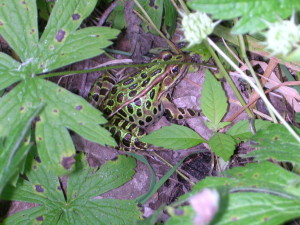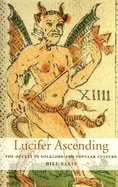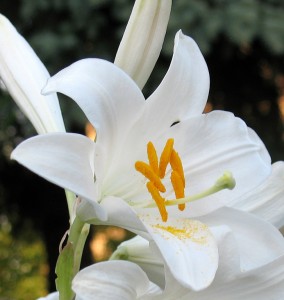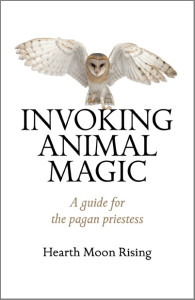

Tag: Pagan Blog Project
Peter Tongue Interviews Hearth on “Awakening to Conscious Co-Creation”
July 26, 2013 One hour on-demand interview about toads, mice, water snakes, werewolves and other under-appreciated animal allies.
One hour on-demand interview about toads, mice, water snakes, werewolves and other under-appreciated animal allies.
New Moon
July 5, 2013
Solstice Moon
June 21, 2013 This Friday, June 21st, at 12:04 AM Eastern Daylight Time (5:04 Universal Time) the sun reaches the northernmost point in her travels, marking the Summer Solstice. Of course, the sun isn’t really moving north; the northern hemisphere of the earth is tilting toward the sun and will begin a reciprocal tilt following the solstice. But from our perspective, the sun has come to the north. This is a high energy time, wonderful for spell work or for group ritual. Traditionally this is the time when covens that have “hived off” to form their own groups return to the mother coven for reunion. Interestingly, it is not the midday zenith of the sun that is considered the most auspicious but rather the short twilight night.On Sunday morning at 7:32 AM Eastern Daylight Time on June 23rd, we have the full moon in June. The June full moon is always special. Women used to gather dew from the leaves of the trees just before sunrise at June’s full moon to use in their spells. This dew is potent for love charms or anything that the heart desires. This full moon arrives twenty-two minutes after the moon is at perigee, the nearest point in her orbit around the earth. At perigee the moon’s influence is obviously stronger, so a full moon at perigee is very powerful.In the past I have expressed skepticism over certain dates that are promoted as unusually auspicious times for doing magic, but this weekend really is a big deal. The perigee full moon occurring so close to the Summer Solstice makes this an extremely powerful time for magic. Analyzing the various factors involved (waxing versus waning moon, astrological sign of the moon, moon void-of-course, and proximity to the solstice or full moon), I would say that the evenings of Friday June 21st, Saturday June 22nd, and Sunday June 23rd are about equally powerful for those living in North America, although I lean very slightly in favor of Saturday the 22nd. If you live on the West Coast, I would recommend a specific time for ritual: that would be during the very early morning hours of June 23rd between 1:10 AM and 1:30 AM Pacific Daylight Time. At this time the moon has entered Capricorn, the astrological sign of her fullness, and the sun will be at her nadir.Since Mercury is getting ready to go retrograde, don’t expect the results of your spells to manifest immediately. Project your energy toward attaining goals that can come to fruition toward the end of the summer or later.If you live in the southern hemisphere, this Winter Solstice weekend is also powerful for magic. The energies particularly favor the beginning of new projects and (metaphorically) the planting of new seeds.
This Friday, June 21st, at 12:04 AM Eastern Daylight Time (5:04 Universal Time) the sun reaches the northernmost point in her travels, marking the Summer Solstice. Of course, the sun isn’t really moving north; the northern hemisphere of the earth is tilting toward the sun and will begin a reciprocal tilt following the solstice. But from our perspective, the sun has come to the north. This is a high energy time, wonderful for spell work or for group ritual. Traditionally this is the time when covens that have “hived off” to form their own groups return to the mother coven for reunion. Interestingly, it is not the midday zenith of the sun that is considered the most auspicious but rather the short twilight night.On Sunday morning at 7:32 AM Eastern Daylight Time on June 23rd, we have the full moon in June. The June full moon is always special. Women used to gather dew from the leaves of the trees just before sunrise at June’s full moon to use in their spells. This dew is potent for love charms or anything that the heart desires. This full moon arrives twenty-two minutes after the moon is at perigee, the nearest point in her orbit around the earth. At perigee the moon’s influence is obviously stronger, so a full moon at perigee is very powerful.In the past I have expressed skepticism over certain dates that are promoted as unusually auspicious times for doing magic, but this weekend really is a big deal. The perigee full moon occurring so close to the Summer Solstice makes this an extremely powerful time for magic. Analyzing the various factors involved (waxing versus waning moon, astrological sign of the moon, moon void-of-course, and proximity to the solstice or full moon), I would say that the evenings of Friday June 21st, Saturday June 22nd, and Sunday June 23rd are about equally powerful for those living in North America, although I lean very slightly in favor of Saturday the 22nd. If you live on the West Coast, I would recommend a specific time for ritual: that would be during the very early morning hours of June 23rd between 1:10 AM and 1:30 AM Pacific Daylight Time. At this time the moon has entered Capricorn, the astrological sign of her fullness, and the sun will be at her nadir.Since Mercury is getting ready to go retrograde, don’t expect the results of your spells to manifest immediately. Project your energy toward attaining goals that can come to fruition toward the end of the summer or later.If you live in the southern hemisphere, this Winter Solstice weekend is also powerful for magic. The energies particularly favor the beginning of new projects and (metaphorically) the planting of new seeds.
Review: Lucifer Ascending by Bill Ellis
June 14, 2013 I picked up this book written by an academic active in Lutheran ministries because the author and I share an uncommon belief: that the West has never been thoroughly Christianized and pagan “superstitions” continue to operate in plain view. Bill Ellis’ examples on this subject are much closer to orthodox ideas of the occult then mine would be, including things like formal ritual magic, Satanic “bibles,” ghost stories, and graveyard encounters with the supernatural. My examples would be more banal, including things like healing charms, housecleaning rituals, garden planting, and signs regarding true love. Yet even keeping his examination of magic to the narrow scope that meets Christian definitions of diabolical, Ellis finds no shortage of material.The inspiration for this treatise appears to be the high level of concern in fundamentalist circles generated by the Harry Potter books, which Ellis believes is misplaced. He places the tenets of the Hogwarts School in historical context and argues, “witchcraft, magical ritual, and contact with the supernatural constitute stable and generally functional folk traditions in cultures in both Europe and North America, up to the present day.” Ellis explores folk magic and legend of the past 300 years with more emphasis on German and Pennsylvania Dutch practices than I have seen elsewhere, and he also gives a nod to the prevalence of hoodoo. For this reason many students of witchcraft will find it useful in providing historical background. Ellis provides interesting theories about the function of witchcraft beliefs in Christian society and the reasons for authoritative suppression of witchcraft. Some of these motivations for suppression, such as patriarchal monopoly of medicine or legal control of marginalized people, will be familiar to many. One which was new to me has to do with the fundamentalist view of Christianity as a force for good that is opposed to witchcraft as the force of evil. Some Christians need to view witches as malignant evil-doers because that belief conforms to their world view and affirms that their own monopoly on goodness. The supposition that “a good witch is worse than a bad witch,” expressed in the Roman Catholic theology which laid the groundwork for the witch hunts, is generally believed by Pagans to reflect the desire of the church to hold monopoly over magic and ritual and to wrest power from women and the lower classes. But this may not be the issue operating in present day clashes between witches and fundamentalists. If certain Christians are determined to view themselves as stalwart goodness in a world of evil, then the presence of malignant witches is reassuring and the presence of good witches is profoundly unsettling. With fundamentalists of this stripe, pagan anti-defamation campaigns to show the world that “we’re really good people” will not meet with success and will even precipitate greater opposition.Ellis devotes considerable space to Satanic escapades of teenagers which range from possession of Anton LaVey’s Satanic Bible to summoning witches or ghosts in order to curse them to vandalizing graveyards. He argues that these are expressions of rebellion arising from the disempowerment of youth, using the “demonic possessions” of the girls in Salem Village which precipitated that late seventeenth century American witch craze as an example. I would agree that obtaining a copy of a book entitled Satanic Bible is an act of rebellion, and the girls in Salem Village may have been acting out of their disempowerment, but many of these Satanic activities strike me as reinforcing of Christian beliefs. The cursing of witches and the vandalism of graveyards expresses disaffection and hostility in a socially conforming way. I would place these actions in a category with gay bashing or desecration of synagogues. If rebellion and defiance is the motive, why not vandalize a church? Churches are occasionally vandalized by teenagers, of course, but these churches tend to be African-American, which supports my take on the issue.The role of women in the early beginnings of the Pentecostal movement, and how that movement co-opted elements of spiritualism and magic, I found fascinating. Ellis explains, “The revival expressed itself from the start as being in some palpable sense governed by supernatural forces.” He contends, “Revivalist movements likely do not produce cycles of supernatural or demonic phenomena, but they do provide ready opportunities in group meetings for people to describe their experiences and fit them into a shared mythology.” Within the context of a new religious movement women found opportunities for leadership that had been denied to them in more orthodox religious settings. One leader, Jesse Penn-Lewis, described the opposition to evangelical women’s ministries as “war by Satan upon the womanhood of the world.” It seems women have typically been at the forefront of new religious movements, from early Christianity to the Pentecostals, only to find themselves in subordinate positions again once these movements solidified.Lucifer Ascending is more evenhanded and better researched than most books dealing with witches coming out of the academic presses, and I think it adds to the social discourse on witchcraft. Even real witches are not always aware of how pervasive witchcraft is.
I picked up this book written by an academic active in Lutheran ministries because the author and I share an uncommon belief: that the West has never been thoroughly Christianized and pagan “superstitions” continue to operate in plain view. Bill Ellis’ examples on this subject are much closer to orthodox ideas of the occult then mine would be, including things like formal ritual magic, Satanic “bibles,” ghost stories, and graveyard encounters with the supernatural. My examples would be more banal, including things like healing charms, housecleaning rituals, garden planting, and signs regarding true love. Yet even keeping his examination of magic to the narrow scope that meets Christian definitions of diabolical, Ellis finds no shortage of material.The inspiration for this treatise appears to be the high level of concern in fundamentalist circles generated by the Harry Potter books, which Ellis believes is misplaced. He places the tenets of the Hogwarts School in historical context and argues, “witchcraft, magical ritual, and contact with the supernatural constitute stable and generally functional folk traditions in cultures in both Europe and North America, up to the present day.” Ellis explores folk magic and legend of the past 300 years with more emphasis on German and Pennsylvania Dutch practices than I have seen elsewhere, and he also gives a nod to the prevalence of hoodoo. For this reason many students of witchcraft will find it useful in providing historical background. Ellis provides interesting theories about the function of witchcraft beliefs in Christian society and the reasons for authoritative suppression of witchcraft. Some of these motivations for suppression, such as patriarchal monopoly of medicine or legal control of marginalized people, will be familiar to many. One which was new to me has to do with the fundamentalist view of Christianity as a force for good that is opposed to witchcraft as the force of evil. Some Christians need to view witches as malignant evil-doers because that belief conforms to their world view and affirms that their own monopoly on goodness. The supposition that “a good witch is worse than a bad witch,” expressed in the Roman Catholic theology which laid the groundwork for the witch hunts, is generally believed by Pagans to reflect the desire of the church to hold monopoly over magic and ritual and to wrest power from women and the lower classes. But this may not be the issue operating in present day clashes between witches and fundamentalists. If certain Christians are determined to view themselves as stalwart goodness in a world of evil, then the presence of malignant witches is reassuring and the presence of good witches is profoundly unsettling. With fundamentalists of this stripe, pagan anti-defamation campaigns to show the world that “we’re really good people” will not meet with success and will even precipitate greater opposition.Ellis devotes considerable space to Satanic escapades of teenagers which range from possession of Anton LaVey’s Satanic Bible to summoning witches or ghosts in order to curse them to vandalizing graveyards. He argues that these are expressions of rebellion arising from the disempowerment of youth, using the “demonic possessions” of the girls in Salem Village which precipitated that late seventeenth century American witch craze as an example. I would agree that obtaining a copy of a book entitled Satanic Bible is an act of rebellion, and the girls in Salem Village may have been acting out of their disempowerment, but many of these Satanic activities strike me as reinforcing of Christian beliefs. The cursing of witches and the vandalism of graveyards expresses disaffection and hostility in a socially conforming way. I would place these actions in a category with gay bashing or desecration of synagogues. If rebellion and defiance is the motive, why not vandalize a church? Churches are occasionally vandalized by teenagers, of course, but these churches tend to be African-American, which supports my take on the issue.The role of women in the early beginnings of the Pentecostal movement, and how that movement co-opted elements of spiritualism and magic, I found fascinating. Ellis explains, “The revival expressed itself from the start as being in some palpable sense governed by supernatural forces.” He contends, “Revivalist movements likely do not produce cycles of supernatural or demonic phenomena, but they do provide ready opportunities in group meetings for people to describe their experiences and fit them into a shared mythology.” Within the context of a new religious movement women found opportunities for leadership that had been denied to them in more orthodox religious settings. One leader, Jesse Penn-Lewis, described the opposition to evangelical women’s ministries as “war by Satan upon the womanhood of the world.” It seems women have typically been at the forefront of new religious movements, from early Christianity to the Pentecostals, only to find themselves in subordinate positions again once these movements solidified.Lucifer Ascending is more evenhanded and better researched than most books dealing with witches coming out of the academic presses, and I think it adds to the social discourse on witchcraft. Even real witches are not always aware of how pervasive witchcraft is.
Lily of the Goddess
June 7, 2013


The Hand of Kwan Yin
May 31, 2013 This is the statue of the goddess Kwan Yin which I have on my altar. It was given to me by a student after my first Kwan Yin statue was broken by my cat – not Samhain, the cat I had before her, Misha.I was very grieved by the loss of this statue, not only because Kwan Yin is an important goddess to me, but because the statue was given to me by a good friend I had lost touch with. Someone explained to me, however, that porcelain statues of Kwan Yin are expected to break eventually, and that I should take the statue to a temple rather than dispose of it myself.Knowing how devastated I was by these events, one of my students was excited to find a statue she thought was Kwan Yin at a garage sale. “I don’t know if this is Kwan Yin but I thought it might be,” she said. “But there’s a hole in it where one of the hands should be. We’ve been trying to figure out what that’s for.” I knew exactly what the hole was for, because my first statue had the same feature. The hole is for a detachable hand that is removed from the statue when making a request. The supplicant carries the hand around with her until the prayer is granted, then returns it to the goddess.Kwan Yin is the Chinese Buddhist goddess of mercy, “She who hears the cries of the world.” She is a complex and multifaceted goddess who has been the subject of much scholarship, particularly with the rebirth of the Goddess Movement. Even before this she had a sizable devoted following, among Westerners as well as Chinese. I first heard about Kwan Yin at a lecture given by the editor of a paper I worked on, Libby Gregory. In the dark ages before videos and the Internet, Midwesterners went to lectures for entertainment. I don’t know if it was a product of the big tent Christian revival experiences of the audience or if this is a common experience during discussions of Kwan Yin, but after Libby’s talk many people came forward and shared their miraculous experiences with Kwan Yin’s intervention. I was impressed.Because she introduced me to Kwan Yin, my feelings about this goddess are intertwined with my feelings about Libby. A small business owner and editor of the local left-wing paper, Libby was a driving force behind the progressive movement in our conservative town. To be honest I often thought of her as a bit of a nuisance, frequently calling me on the telephone requesting my services for hard journalistic assignments requiring a great deal of investigation. For some reason I almost always said yes, even though these assignments offered very little pay. It was another Kwan Yin miracle.Eventually I moved away to the West Coast and didn’t think too much about Libby. I liked her, but I certainly didn’t give her my new phone number. It was when I was back for one of my infrequent visits that I learned Libby had died several years earlier, killed in a plane crash. Although Libby had never been a huge figure in my personal life, I could not imagine the town without her. She was like the Olentangy River or the state university campus – she was a part of the community structure. Her loss left a hole that could not be replaced.It did not surprise me to learn that “killed in a plane crash” only told part of the story. Libby had stayed behind to help other passengers as the smoking plane was being evacuated, and so was one of the few who did not survive. We could wish she had left the burning aircraft while she had a chance, but if she had done that she wouldn’t have been the person she was.When I was ordained in the Fellowship of Isis, I was asked to make a pledge to three goddesses, one of which I would be “priestess of” and two more I would agree to serve. I chose Kwan Yin as one of my three goddesses. Not because of Libby exactly, but because of mercy.My student took the statue back home and asked her woodworking husband to make a new hand for it. I’ve always wondered about the missing hand, if someone prayed for something they wanted very much and the request was never granted. I hope by this time they have found recompense for their loss.
This is the statue of the goddess Kwan Yin which I have on my altar. It was given to me by a student after my first Kwan Yin statue was broken by my cat – not Samhain, the cat I had before her, Misha.I was very grieved by the loss of this statue, not only because Kwan Yin is an important goddess to me, but because the statue was given to me by a good friend I had lost touch with. Someone explained to me, however, that porcelain statues of Kwan Yin are expected to break eventually, and that I should take the statue to a temple rather than dispose of it myself.Knowing how devastated I was by these events, one of my students was excited to find a statue she thought was Kwan Yin at a garage sale. “I don’t know if this is Kwan Yin but I thought it might be,” she said. “But there’s a hole in it where one of the hands should be. We’ve been trying to figure out what that’s for.” I knew exactly what the hole was for, because my first statue had the same feature. The hole is for a detachable hand that is removed from the statue when making a request. The supplicant carries the hand around with her until the prayer is granted, then returns it to the goddess.Kwan Yin is the Chinese Buddhist goddess of mercy, “She who hears the cries of the world.” She is a complex and multifaceted goddess who has been the subject of much scholarship, particularly with the rebirth of the Goddess Movement. Even before this she had a sizable devoted following, among Westerners as well as Chinese. I first heard about Kwan Yin at a lecture given by the editor of a paper I worked on, Libby Gregory. In the dark ages before videos and the Internet, Midwesterners went to lectures for entertainment. I don’t know if it was a product of the big tent Christian revival experiences of the audience or if this is a common experience during discussions of Kwan Yin, but after Libby’s talk many people came forward and shared their miraculous experiences with Kwan Yin’s intervention. I was impressed.Because she introduced me to Kwan Yin, my feelings about this goddess are intertwined with my feelings about Libby. A small business owner and editor of the local left-wing paper, Libby was a driving force behind the progressive movement in our conservative town. To be honest I often thought of her as a bit of a nuisance, frequently calling me on the telephone requesting my services for hard journalistic assignments requiring a great deal of investigation. For some reason I almost always said yes, even though these assignments offered very little pay. It was another Kwan Yin miracle.Eventually I moved away to the West Coast and didn’t think too much about Libby. I liked her, but I certainly didn’t give her my new phone number. It was when I was back for one of my infrequent visits that I learned Libby had died several years earlier, killed in a plane crash. Although Libby had never been a huge figure in my personal life, I could not imagine the town without her. She was like the Olentangy River or the state university campus – she was a part of the community structure. Her loss left a hole that could not be replaced.It did not surprise me to learn that “killed in a plane crash” only told part of the story. Libby had stayed behind to help other passengers as the smoking plane was being evacuated, and so was one of the few who did not survive. We could wish she had left the burning aircraft while she had a chance, but if she had done that she wouldn’t have been the person she was.When I was ordained in the Fellowship of Isis, I was asked to make a pledge to three goddesses, one of which I would be “priestess of” and two more I would agree to serve. I chose Kwan Yin as one of my three goddesses. Not because of Libby exactly, but because of mercy.My student took the statue back home and asked her woodworking husband to make a new hand for it. I’ve always wondered about the missing hand, if someone prayed for something they wanted very much and the request was never granted. I hope by this time they have found recompense for their loss.
Kitten
May 24, 2013



The Jupiter Stone
May 17, 2013 The god Jupiter has occasionally appeared to me over the years, and I have found his presence surprising for two reasons. The first is that he surely understands that I am a feminist, and a Dianic at that, and am therefore rather miffed about the role his cult has played in the suppression of matrifocal religion. The second thing that has surprised me is that Jupiter’s energy has not seemed offensive and thuggish. He looks stocky and muscular, with an impressive amount of hair and beard, but his energy feels solid yet gentle.Jupiter is considered the Roman equivalent of the Greek god Zeus, the father god of the thunderbolt, who rules the pantheon. He is also the namesake for the large red planet, considered in astrology the planet of good fortune. Some scholars say that the Indo-European Roman Jupiter became merged with Zeus due to Greek influence in late classical times. Others say that an Etruscan god Tinia, who may himself have been drawn from Greek influence, became merged with the Roman Jupiter. Still others say that both Jupiter and Zeus are forms of a proto-Indo-European supreme sky father deity. An alternate idea is that a pre-Indo-European god of unknown name became merged with Jupiter after Indo-European conquest. None of these hypotheses are exclusionary: a proto-Indo-European Sky Father may have merged with prominent local gods in the Greek and Roman peninsulas, later becoming merged again, with another god Tinia thrown into the mix during a period of Etruscan influence.There is not much written for the lay reader on the earliest form of Jupiter. Most people simply do not find early Roman religion very interesting. We do know that his earliest known shrine was southeast of Rome and pre-dated Rome, and that a confederation from the Latin cities convened there for ceremony twice a year. Stewart Perowne says of Jupiter’s temple in Rome, “It is rather a shock to find that he was neither godlike nor human: he was just an old stone, Jupiter Lapis.” But now my interest is piqued. Here we have the material connection, the fundamental source in nature.Jupiter Lapis “the old stone” oversaw both individual oaths and the ratification of treaties. Perowne asserts that this “goes back to the neolithic days, perhaps even before them . . . When the metal-users arrived they associated these venerable and rather terrifying flints with the greatest deity they knew, the god of light, Jupiter, who among other functions was the punisher of perjurors.”
The god Jupiter has occasionally appeared to me over the years, and I have found his presence surprising for two reasons. The first is that he surely understands that I am a feminist, and a Dianic at that, and am therefore rather miffed about the role his cult has played in the suppression of matrifocal religion. The second thing that has surprised me is that Jupiter’s energy has not seemed offensive and thuggish. He looks stocky and muscular, with an impressive amount of hair and beard, but his energy feels solid yet gentle.Jupiter is considered the Roman equivalent of the Greek god Zeus, the father god of the thunderbolt, who rules the pantheon. He is also the namesake for the large red planet, considered in astrology the planet of good fortune. Some scholars say that the Indo-European Roman Jupiter became merged with Zeus due to Greek influence in late classical times. Others say that an Etruscan god Tinia, who may himself have been drawn from Greek influence, became merged with the Roman Jupiter. Still others say that both Jupiter and Zeus are forms of a proto-Indo-European supreme sky father deity. An alternate idea is that a pre-Indo-European god of unknown name became merged with Jupiter after Indo-European conquest. None of these hypotheses are exclusionary: a proto-Indo-European Sky Father may have merged with prominent local gods in the Greek and Roman peninsulas, later becoming merged again, with another god Tinia thrown into the mix during a period of Etruscan influence.There is not much written for the lay reader on the earliest form of Jupiter. Most people simply do not find early Roman religion very interesting. We do know that his earliest known shrine was southeast of Rome and pre-dated Rome, and that a confederation from the Latin cities convened there for ceremony twice a year. Stewart Perowne says of Jupiter’s temple in Rome, “It is rather a shock to find that he was neither godlike nor human: he was just an old stone, Jupiter Lapis.” But now my interest is piqued. Here we have the material connection, the fundamental source in nature.Jupiter Lapis “the old stone” oversaw both individual oaths and the ratification of treaties. Perowne asserts that this “goes back to the neolithic days, perhaps even before them . . . When the metal-users arrived they associated these venerable and rather terrifying flints with the greatest deity they knew, the god of light, Jupiter, who among other functions was the punisher of perjurors.”
Invoking Animal Magic
May 3, 2013 I am pleased this week to write about my forthcoming book Invoking Animal Magic: A guide for the Pagan priestess. The book reflects my research into the legends and folklore of various animals, as well as my direct experience in ritual and spellcasting. Rather than write an exhaustive encyclopedia of the “meanings” of different animals, I have elected to identify some of the principles of animal magic in Euro-shamanism and discuss them in a general way. The nine animals I have chosen to explore in depth are representative of different types of animals: those that live underground, those that migrate, those that fly, those that hibernate, etc.Nine is the number of pregnancy, and while I have no illusions that a book is anything like a baby, the process of bringing forth a book is like giving birth. The book is something that came from me, but at the same time is not me. I keep thinking about the last lines of Sylvia Plath’s poem “Metaphors”:
I am pleased this week to write about my forthcoming book Invoking Animal Magic: A guide for the Pagan priestess. The book reflects my research into the legends and folklore of various animals, as well as my direct experience in ritual and spellcasting. Rather than write an exhaustive encyclopedia of the “meanings” of different animals, I have elected to identify some of the principles of animal magic in Euro-shamanism and discuss them in a general way. The nine animals I have chosen to explore in depth are representative of different types of animals: those that live underground, those that migrate, those that fly, those that hibernate, etc.Nine is the number of pregnancy, and while I have no illusions that a book is anything like a baby, the process of bringing forth a book is like giving birth. The book is something that came from me, but at the same time is not me. I keep thinking about the last lines of Sylvia Plath’s poem “Metaphors”:
Money’s new-minted in this fat purse.I’m a means, a stage, a cow in calf.I’ve eaten a bag of green apples,Boarded the train there’s no getting off
Yes, the train has left the station. All the revising, the endless fact checking has to come to an end somewhere. Errors in fact and grammar must now stand. Even scarier is the thought that decades later I may disagree with what I’ve written. How much of what I thought twenty years ago is true for me today?But mostly I’m excited about the start of another journey, looking forward to talking to people about my ideas and curious about the direction they will take me and others.The website for Invoking Animal Magic has more information and an excerpt. The book will be available to hold in your hands in a few months. If you live in the UK, you can pre-order on Amazon. You can receive an email when the book is ready for purchase by going to the US Amazon page or leaving your email address under “subscribe” on the Invoking Animal Magic webpage. Even better, ask your local metaphysical store to carry the book. If you are interested in writing a book review from a pdf copy, let me know.Here’s to an intriguing and illuminating adventure!
